Our Latest Feature Articles & Reviews...
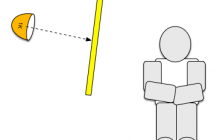
The White Shirt, Where Soft Light Becomes Your Enemy
The bread-and-butter work in my area is corporate marketing projects, and plenty of those involve talking head videos. And plenty…

A Critical Look at Varicam’s Latest Demo Reel
I’ve waited a long time for a single sensor Varicam, and it looks like that wait may be coming to…
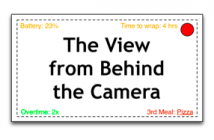
How I Became… an Expert?
The answer is not as sexy as you think. It boils down to being curious, asking lots of annoying questions,…
NAB Show Reports...
More Articles & Reviews from DV Info Net...
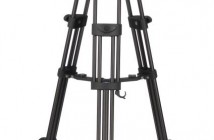
Review: Libec RS 250M Video Support System
The pan, tilt and slide plate lock levers have stops preventing them from being accidentally unscrewed from the head. In addition, the slide plate lock lever has a 90-degree throw from horizontal against the “off” stop to vertically downward, which keeps it from swinging above the head plate, which would prevent it locking with some of the more “hippy” camera rigs. Should that change due to wear, it is adjustable using an Allen key. Interestingly, that lever shows no signs of self-locking during transit, which is a big plus, but its position down behind the RH pan bar rosette and lever is the usual pain for access. The head is very easy to level, perhaps the easiest of the bunch, as a result of having exceedingly smooth finishes to both the head ball and the receiver bowl, in combination with a very jitter free levelling bubble and a “bubble centre” dot aiding correct alignment, IF you can get a hand to the clamp knob, which I’ll go into later.
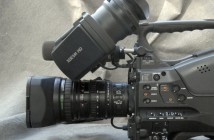
Sony PMW-350K Viewfinder Bracket Kit
Note: This article was originally published by Patrick McLoadand is reprinted here with his kind permission. I finally made the…
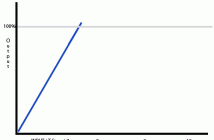
Understanding Gamma, CineGamma, HyperGamma and S-Log
Note: This article was originally published by Alister Chapmanand is reprinted here with his kind permission. The graph to the…
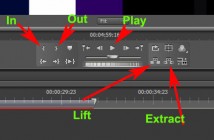
Premiere Pro CS5 Tips, Tricks, and Notes
As a follow-up to Pete Bauer’s recent DVi feature article Adobe Premiere Pro CS5 Six Months Later, we’re presenting a collection of user tips, editing tricks, and a couple of notes regarding RAM and operating systems designed to assist your transition into Premiere Pro. Culled from various Premiere Pro discussions from within our own Adobe CS5 forum, this article takes the golden nuggets that might have been harder to find on their own from within the myriad topics on our site and presents them all together here in an easy-to-read abridged format (including links pointing to each original thread, in case you want to dive in to any particular point and explore it more thoroughly). Whether you’ve already made the switch or just recently upgraded from a previous version of Premiere Pro, or even if you’re still just thinking about it, we hope you’ll find it useful.
A Wish List for the 2011 Final Cut Studio
This article originally appears at the candler blog and is republished here with permission. Ever since Apple removed the word…
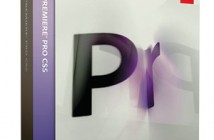
Adobe Premiere Pro CS5 Six Months Later
Does anybody out there think their computer is just too fast? Wish you’d have bought a slower one? Doubt it! There’s no such thing as a computer that’s too fast. The better configured your system is, the more capability you’ll gain from PPro for your multi-stream HD editing. I think realistically you’ll really want an i7 and all the DDR3 RAM you can cram in your system, as well as the right video card (more on that later). While naturally Adobe isn’t going to reveal their secret recipes, it appears that PPro holds as many frames in RAM as it can – which is a lot more with 64 bit addressing – using only as a last resort the much slower temp/preview files and the swap file on the hard drive.

First Look: SmallHD DP6 vs. Marshall V-LCD50-HDMI
Menu-wise, there are many similarities and many differences. As noted I won’t go into them here, the manufacturer’s websites have a fair amount listed and others will cover all of this. Suffice to say that both have many of the desired features such as image flip, focus assist and the like. The 5″ uniquely has framelines; the DP6 has a custom scaling feature. Whether you need either feature depends on how you use these monitors.

Preview: Sony Vegas Pro 10
IBC announced the upcoming launch and gave a preview of Vegas Pro 10
with an expected release date of October 11. Let’s take a look at the new
features and changes found in Vegas Pro 10.

Review: Vinten Vision Blue
Right from the beginning, Vision Blue threw up some pretty major conundrums. On the one hand, the spec was for a system priced for amateurs and semi pro’s, which the proposed price most surely is. On the other hand, the spec was, to use a motoring analogy, like asking Rolls Royce to make a Mini at a Mini price but with all the quality and performance of a Rolls Royce. I just could not see how Vinten were going to square that circle without taking some serious liberties with something. Surely it couldn’t be done without cutting corners somewhere? So it was with an air of mild foreboding that I embarked on my investigation of the Vision Blue system.
